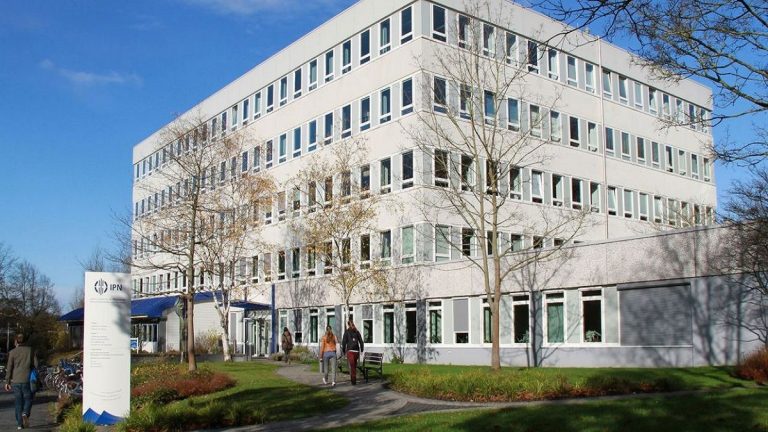
The combination of optical components with electronics on the same microchip can potentially solve the bandwidth bottleneck in modern computers and allow devices with decreased power consumption. Since the integration of well-performing III-V-based lasers (e.g. InGaAs, GaSb or InP) with the mature Si-based electronics proves challenging especially from a technological point of view, solutions within group IV of the periodic table are developed. This is hampered by the indirect bandgap of silicon (Si) and germanium (Ge), which form the foundation of modern electronics. Alloying Ge with another group IV material tin (Sn) has recently been proven to allow the formation of a direct bandgap material, prerequisite for any optoelectronic device. First characterizations proved optically-pumped lasing, as well as improved charge carrier mobilities compared to elemental Ge layers.
An important aspect for future photonic and nanoelectronic devices is the control of doping inside the layers. Injection of electrons and holes in devices, for example into active regions of lasers or in the channel of field-effect transistors (FETs), requires n- and p-type doped material. Furthermore, slight n-type doping may enhance the electronic material properties by increasing the number of high mobility charge carriers.
Project description:
The candidate will perform a variety of structural and electrical analysis. Both n- and p-type doped GeSn and SiGeSn layers, which are grown in a reduced-pressure CVD reactor at the same institute, are investigated. Techniques such as SIMS, HR- XRD, Rutherford Backscattering Spectrometry, TEM have to be performed in order to investigate doping profiles and crystallinity of the grown layers.
The work also involves sample preparation for electrical characterizations. For this purpose, work in the Cleanroom of the Helmholtz Nano Facility (HNF) is essential. The fabricated devices will be measured by Hall- and Van der Pauw methods to obtain information on charge carrier density, resistivity and carrier mobility.
Information and application:
Dr. Dan Buca
Peter Grünberg Institute 9 (PGI-9)
Forschungszentrum Jülich
Phone: +49 2461 61-3663
Mail: d.m.buca@fz-juelich.de
Prof. Detlev Grützmacher
Director of Peter Grünberg Institute 9 (PGI-9)
Forschungszentrum Jülich
Phone: +49 2461 61-2340
Mail: d.gruetzmacher@fz-juelich.de






